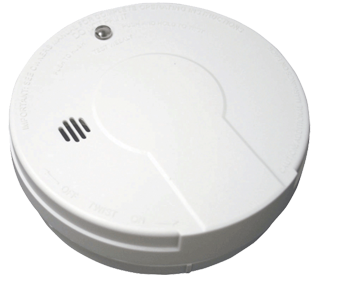Smoke Detectors
 In an effort to enhance the fire safety of Miami Township residents the Miami Township Fire & EMS department in cooperation with the American Red Cross, Cincinnati Chapter and local businesses, will provide at no cost, a Smoke Detector and/or a Carbon Monoxide Detector to those in need.
In an effort to enhance the fire safety of Miami Township residents the Miami Township Fire & EMS department in cooperation with the American Red Cross, Cincinnati Chapter and local businesses, will provide at no cost, a Smoke Detector and/or a Carbon Monoxide Detector to those in need.If you know of someone in need of these safety devices, please call 248-3700.
SMOKE ALARM SAFETY TIPS
Source: http://www.nfpa.org
Smoke alarms save lives. Almost two-thirds of home fire deaths resulted from fires in homes with no smoke alarms or no working smoke alarms. When there is a fire, smoke spreads fast and you need smoke alarms to give you time to get out.
• Install smoke alarms in every bedroom, outside each separate sleeping area and on every level of the home, including the basement. Interconnect all smoke alarms throughout the home. When one sounds, they all sound.
• An ionization smoke alarm is generally more responsive to flaming fires, and a photoelectric smoke alarm is generally more responsive to smoldering fires. For the best protection, both types of alarms or a combination alarm (photoelectric and ionization) should be installed in homes.
• Test alarms at least monthly by pushing the test button.
• Smoke rises; install smoke alarms following manufacturer's instructions high on a wall or on a ceiling. Save manufacturer's instructions for testing and maintenance.
• Replace batteries in all smoke alarms at least once a year. If an alarm “chirps”, warning the battery is low, replace the battery right away.
• Replace all smoke alarms, including alarms that use 10-year batteries and hard-wired alarms, when they are 10 year old or sooner if they do not respond properly.
• Be sure the smoke alarm has the label of a recognized testing laboratory.
• Alarms that are hard-wired (and include battery backup) must be installed by a qualified electrician.
• If cooking fumes or steam sets off nuisance alarms, replace the alarm with an alarm that has a "hush" button. A "hush" button will reduce the alarm’s sensitivity for a short period of time.
• An ionization alarm with a hush button or a photoelectric alarm should be used if the alarm is within 20 feet of a cooking appliance.
• Smoke alarms that include a recordable voice announcement in addition to the usual alarm sound, may be helpful in waking children through the use of a familiar voice.
•Smoke alarms are available for people who are deaf or hard of hearing. These devices use strobe lights. Vibration devices can be added to these alarms.
• Smoke alarms are an important part of a HOME FIRE ESCAPE PLAN.
